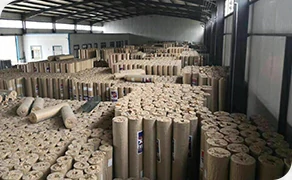 TEL:
+86-13102802206
TEL:
+86-13102802206
 Email:
fencenetting@china.com
Email:
fencenetting@china.com
 Language
Language
 TEL:
+86-13102802206
TEL:
+86-13102802206
 Email:
fencenetting@china.com
Email:
fencenetting@china.com
 Language
Language


The Cost of Building a Barbed Wire Fence A Comprehensive Overview
Building a barbed wire fence can be an effective solution for property delineation, livestock containment, and security. However, understanding the cost involved in constructing such a fence is crucial for anyone considering this option. In this article, we will explore the various factors that influence the cost of building a barbed wire fence, including materials, labor, and additional considerations.
Materials Required
The primary component of a barbed wire fence is, of course, the barbed wire itself. Prices for barbed wire can vary depending on the gauge, quality, and the type of coating used to prevent rust and corrosion. Generally, the cost of barbed wire can range from $0.10 to $0.30 per linear foot. Heavier gauge wire tends to be more expensive but offers better durability and longevity.
In addition to the barbed wire, you will need posts to support the fence. Common materials for fence posts include wood, galvanized steel, or T-posts. Wooden posts are often the cheapest, costing around $5 to $10 each, while steel posts can range from $2 to $5 each. The spacing of the posts typically ranges from 8 to 12 feet apart, meaning more posts will be needed for larger areas.
You will also need to consider the cost of barbed wire insulators, fasteners, and additional materials like tension wire or braces for added stability. The total cost for these additional materials can add around 10% to 20% to the overall budget.
Labor Costs
The next significant factor in the cost of building a barbed wire fence is labor. If you decide to hire professionals for the installation, labor costs can vary greatly depending on location, the complexity of the terrain, and the experience of the workers. On average, hiring a contractor can cost between $30 to $70 per hour. It may take anywhere from several hours to a couple of days to complete the installation, depending on the length of the fence and site conditions.
For those with a bit of DIY spirit, building the fence yourself can reduce labor costs significantly. However, it’s essential to have the right tools and equipment, such as a post-hole digger, fencing pliers, and a tensioning tool for the barbed wire. If you decide to tackle this project alone, be sure to allocate enough time for it, as setting posts and running the wire can be labor-intensive.

Land Considerations
Another essential aspect to consider is the terrain where the fence will be built. Fencing on flat, open land is relatively straightforward, while hilly or uneven terrain can increase labor time and costs due to additional adjustments or reinforcements needed to keep the fence stable. Additionally, if the property has dense brush or trees, clearing the land may require extra work, further driving up costs.
Maintenance Costs
While the initial costs may be a significant investment, it’s also important to consider ongoing maintenance. Barbed wire fences require periodic inspections to ensure they remain effective. Issues can include rusting of the wire, broken posts, or wildlife damage. Maintenance costs are often overlooked but can be expected to add an additional 1% to 3% of the initial cost of the fence annually.
Total Cost Estimate
When we consider all these factors, the average cost for building a barbed wire fence can range widely from $1 to $5 per linear foot. For a simple fence design on flat land, a property owner might expect to pay around $1,000 for 1,000 feet of fencing, whereas more complicated installations with high-quality materials and professional labor can run significantly higher.
Conclusion
Building a barbed wire fence can be a practical endeavor for securing property and managing livestock. However, careful consideration of the various costs involved is essential for making an informed decision. By budgeting for materials, labor, terrain conditions, and ongoing maintenance, property owners can ensure that their fencing project meets both their financial and operational needs. Whether opting for a DIY approach or hiring a professional, understanding the cost structure is key to a successful fencing project.